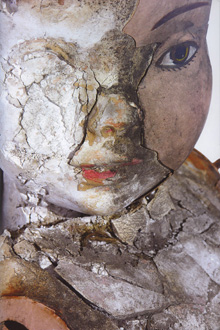June 18-September 11, 2009
Rubin and L Galleries and Project space

The word "disappeared" was redefined during the mid-20th Century in Latin America. "Disappeared" evolved into a noun used to identify people who were kidnapped, tortured and killed by their own governments in the latter decades of the twentieth century in Argentina, Brazil, Chile, Uruguay and Venezuela. Colombia with its fifty-year civil war and Guatemala with its own thirty-seven-year civil war further expanded the meanings and uses of "disappeared."
The exhibition contained work from thirteen artists and one artist' collective from these countries, who over the course of the last thirty years have made art about the disappeared. These artists lived through the horrors of the military dictatorships that rocked their countries in the mid-decades of the twentieth century. Some worked in the resistance; some had parents or siblings who were disappeared; others were forced into exile. The youngest were born into the aftermath of those dictatorships. And still others have lived in countries maimed by endless civil war.
This traveling exhibition, curated by the North Dakota Museum of Art, was exhibited jointly by the Stanlee and Gerald Rubin Center for the Visual Arts, the Centennial Museum and the Union Gallery, all on the UTEP campus. Campus departments and bi-national community arts organizations participated in collaborative programming over the course of the exhibition, inviting broad community dialogue on the issues presented.
Funded in part by the Lannan Foundation.



